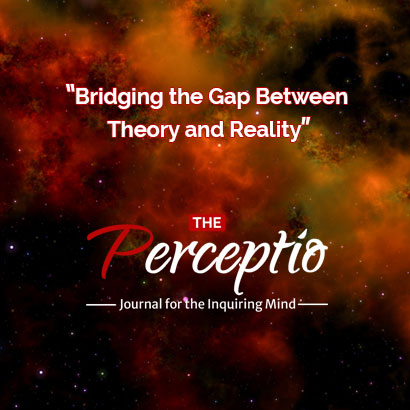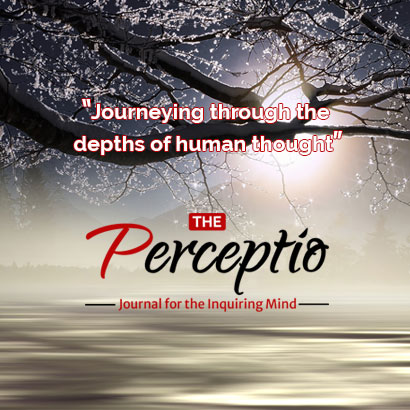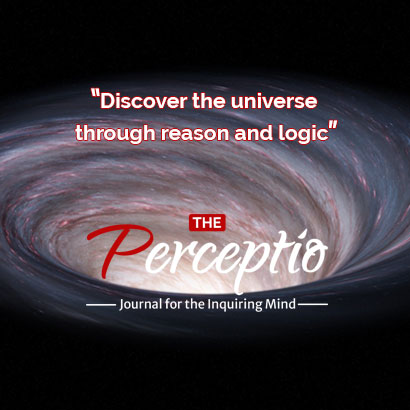Optics: The scientific study of sight and the behaviour of light, or the properties of transmission and deflection of other forms of radiation.
Introduction to Ray Optics
Optics
In the realm of Physics, few areas are as captivating and imaginative as Optics. “The Study of Light”, in simple terms, Optics unravels the mysteries behind our perception of the world — our vision, the colours we see, and the astonishing phenomena that surround us. In this article, we shall embark on a journey into the enchanting world of Optics, delve into the key principles of reflection and refraction, and discover the wonders of optical instruments.
Ray Optics
At its core, ray optics describes how light behaves when interacting with various materials and objects. It simplifies the study of light by considering it as a collection of straight rays that travel in a straight line until they encounter a boundary or are affected by optical elements such as lenses and mirrors.
Nature of Light
Light is the fundamental element of optics, and comes across as a pretty common term for us. We use the word ‘Light’ numerous times in our day-to-day conversations. Scientifically, light is an electromagnetic radiation that moves through space in the form of waves. While light also behaves as particles (photons), we shall treat light as rays for the scope of this article.
Laws of Light: Reflection and Refraction
In Ray Optics, the behaviour of light is governed by two fundamental principles: Reflection and Refraction.
Reflection of Light
The Law of Reflection of Light states that when a light ray encounters a smooth surface, it reflects off at the same angle at which it was incident on the surface. In other terms, if ‘normal’ be a line perpendicular on the plane where the light ray reflects, it states that the angle of incidence (angle between incident ray and normal) of an incident ray is equal to the angle of reflection (angle between reflected ray and normal) of its corresponding reflected ray.
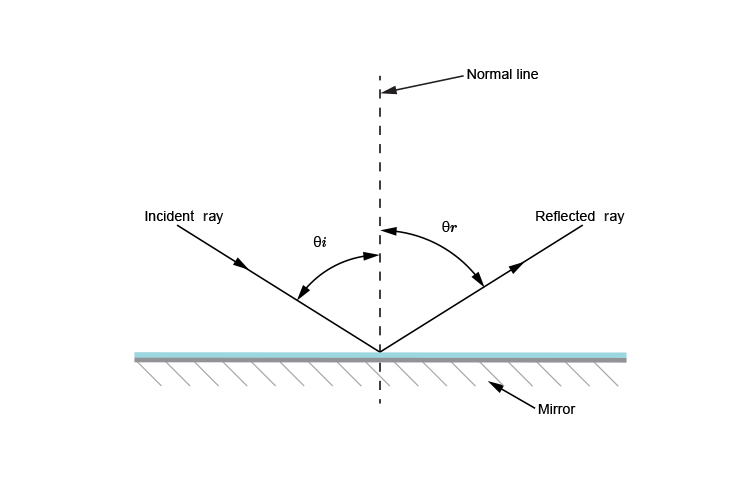
Hence, we can state the laws of reflection as follows:
- The angle of incidence is equal to the angle of reflection for a light ray incident on a smooth surface (such as a plane mirror) — ∠θi = ∠θr
- The incident ray, the normal and the reflected ray, all lie on the same plane.
The law explains why we see our reflection in the mirror, and how light bounces off smooth surfaces.
Refraction of Light
The law of refraction, on the other hand, deals with the bending of light as it passes from one medium to another. The bending of light is caused by the change in the wave’s speed. Light has different speeds in different mediums. When light travels in the same medium, it travels along a straight line, however; when the medium changes, the speed of light changes and light bends.
The primary law governing the behaviour of Refraction of Light is Snell’s Law.
According to Snell’s Law, for the light of given colour and for the given pair of media, the ratio of the sine of the angle of incidence to the sine of the angle of refraction is constant.
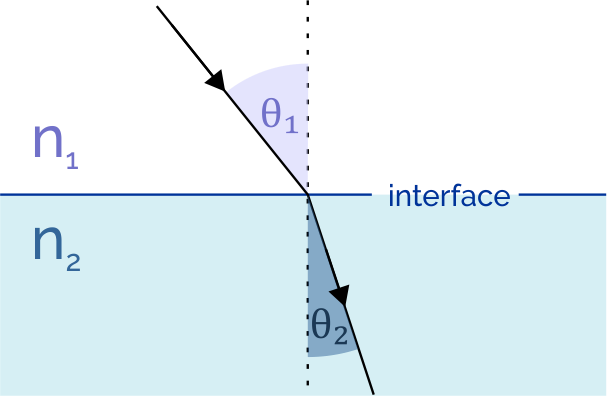
Mathematically, Snell’s law can be represented as:
where, n1 and n2 are the refractive indices of the rarer and denser medium, respectively.
This phenomenon of bending of light explains the formation of various visual marvels of nature, such as the apparent bending of a pencil in water, and the formation of a rainbow.
Optical Instruments
Ray Optics plays a vital role in our understanding of optical instruments that have revolutionized our lives. Some notable examples of such instruments are:
- Cameras: Cameras rely on lenses to focus light onto an image sensor, capturing the scene in front of them. Ray optics helps in understanding how lenses bend and focus light rays to create clear and detailed images.
- Microscopes: Microscopes utilize lenses to magnify small objects and reveal their intricate details. Ray optics guides the design and arrangement of lenses in microscopes, enabling scientists to explore the microscopic world.
- Telescopes: Telescopes use lenses or mirrors to gather and focus light from distant celestial objects. By studying the principles of ray optics, astronomers can construct telescopes that capture and amplify the faint light from stars and galaxies, allowing us to peer deep into the cosmos.
- Eyeglasses: Corrective lenses in eyeglasses employ ray optics to compensate for various vision problems, such as nearsightedness or farsightedness. These lenses redirect light rays to ensure proper focus on the retina, improving vision clarity.
Conclusion
Personally, I believe that Ray Optics is crucial in the study of Optics, and Physics as a whole. Its simplistic nature makes it easy for anyone to understand, and acts as a stepping stone for aspiring physicists to delve deeper into the beautiful study of Optics. From explaining the apparent bending of objects in water, to the formation of rainbows, ray optics defines a wide array of natural phenomenon. Moreover, the practical applications of ray optics are endless; from cameras, to telescopes, to everyday eye-wear.
As we continue to delve deeper into the field of Optics, the principles of ray optics will be essential in paving the way for advancements that will shape our future understanding of light, vision, and the vast possibilities they hold.
For more posts on Physics, visit: Physics Posts.
